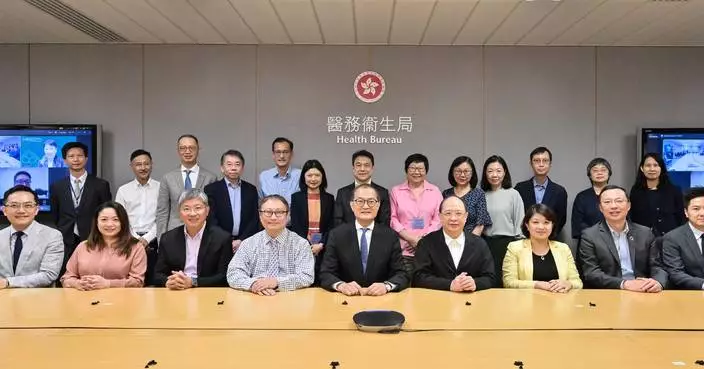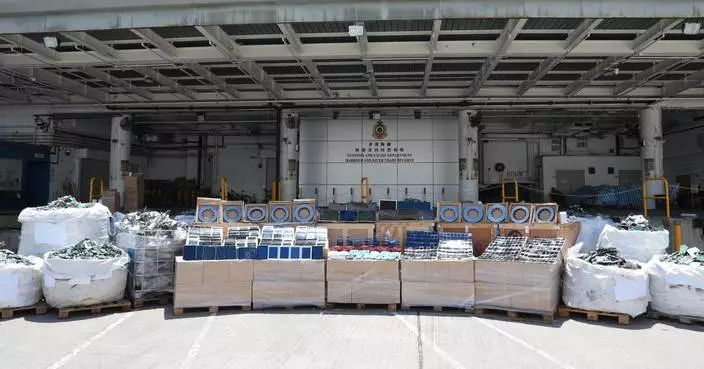Government takes action to combat antimicrobial resistance and ensure safety of local aquatic products in hong kong
Following is a question by the Hon Chan Hak-kan and a reply by the Secretary for Environment and Ecology, Mr Tse Chin-wan, in the Legislative Council today (June 26):
Question:
It has been reported that the United Nations Environment Programme has warned that by 2050, up to 10 million people may die each year due to antimicrobial resistance. In addition, a study conducted by a local university has found that Shing Mun River, Kai Tak River and the waters near various landfills contain residual medicines (including antibiotics). In this connection, will the Government inform this Council, whether it conducted tests on the content of antimicrobial medicines such as antibiotics in local aquatic products in the past three years; if so, of the details; if not, the reasons for that; of the measures in place to prevent the content of antimicrobial medicines in local waters, rivers and aquatic products from exceeding the prescribed limits?
Reply:
President,
Upon consultation with the Health Bureau, we provide a consolidated reply to the question raised by the Hon Chan Hak-kan as follows:
Antimicrobial Resistance (AMR) refers to the ability of bacteria to evolve and become resistant to previously effective medications. When patients are infected with drug-resistant bacteria, their illness may be prolonged, and may even increase the death risk. The misuse and overuse of antibiotics are the major factors leading to the development of drug-resistant bacteria.
The Government has been placing great importance on addressing the necessity of combating AMR. In 2016, the High Level Steering Committee on Antimicrobial Resistance was established, chaired by the Secretary for Health and comprising members from various government bureaux and departments, including the Health Bureau, the Environment and Ecology Bureau, the Agriculture, Fisheries and Conservation Department (AFCD), the Department of Health, the Food and Environmental Hygiene Department (FEHD), and the Environmental Protection Department (EPD), as well as public and private hospitals, healthcare organisations, academia and relevant professional bodies. The aim is to encourage professional sectors to collaborate and exchange ideas within the framework of "One Health". In 2022, the Government published the second Hong Kong Strategy and Action Plan on Antimicrobial Resistance (the Action Plan), outlining strategies to tackle the threat of AMR from 2023 to 2027. The objectives include optimising the use of antimicrobials and promoting research related to AMR, such as the role and importance of the environment in the evolution of AMR.
Citizens should pay attention to personal hygiene when using antimicrobials (including maintaining hand hygiene) and follow doctors' advice on antimicrobial use, and consult doctors or pharmacists as appropriate if in doubt.
Under the "One Health" framework, relevant government bureaux and departments are working closely together through cross-sectoral co-ordination and collaboration to implement various aspects of the Action Plan.
For the antibiotics type antimicrobial drugs content testing on locally sold aquatic products, the Centre for Food Safety of the FEHD collected around 4 300 locally sold aquatic product samples for testing antibiotics residues under the food surveillance programme from 2021 to May 2024, among which the antibiotics residues content of eight samples were found to be unsatisfactory. The satisfactory rate was 99.8 per cent. For reference, the overall satisfactory rate of the routine food surveillance programme from 2021 to 2023 was 99.8 per cent to 99.9 per cent each year. It is clear that satisfactory rate of antibiotics residues content is similar to the overall satisfactory rate of the routine food.
In addition, the AFCD has launched the Accredited Fish Farm Scheme (the Scheme) to enhance the competitiveness of local fisheries products. Under the Scheme, aquaculture farms are not allowed to use any antimicrobials without prior instructions of the AFCD or a registered veterinary surgeon. Aquaculture farms must also maintain records of the inventory and usage of drugs and feed additives. Over the past three years, the AFCD has collected around 800 local aquaculture samples for testing of antimicrobial drugs content, and all samples have met the relevant requirements.
On disposal of waste medicines, according to the Waste Disposal Ordinance (Cap. 354), expired or ineffective waste medicines (including antibiotics) generated by pharmaceutical suppliers or medical institutions are classified as chemical waste. Their storage, collection, delivery and disposal must comply with the requirements of the Waste Disposal (Chemical Waste) (General) Regulation (Cap. 354C). The relevant organisations are required to engage licensed chemical waste collectors to collect and deliver the chemical wastes to the licensed chemical waste disposal facilities for incineration or proper disposal. The EPD also issues letters to remind organisations such as hospitals and clinics to properly dispose of waste medicines generated (including antibiotics) in accordance with the legislative requirements.
As for the small amount of waste medicines generated from domestic sources, they can be disposed of as general domestic waste. The landfills in operation in Hong Kong were designed and constructed as fully contained facilities with a multi-layer composite impermeable liner system covering the entire base area of the landfills. Waste undergoes anaerobic digestion in the landfill and the leachate arising from decomposition will be fully collected and treated at the leachate treatment facility set up at the landfill, including the use of sequential batch reactors for aerobic digestion. If the leachate contains residual antibiotics, the majority of which will have been removed before discharging into public sewers.
On sewage treatment, over 93 per cent of the local population are now served by the public sewerage system. According to the research conducted by the Drainage Services Department, the sewage treatment works in Hong Kong can effectively remove most of the pharmaceutical residues (including antibiotics) in the sewage, for which the removal rate of some antibiotics in the secondary sewage treatment works can reach 90 per cent or above. These findings are on par with those of relevant overseas research studies. The amount of the residual antibiotics in the treated effluent will have been greatly reduced after the aforementioned sewage treatment process.
To protect the quality of aquatic ecosystem of Hong Kong's marine waters and river waters, the EPD has all along been implementing routine water quality monitoring programme to provide data for water quality management and pollution control purposes. Regarding the impacts of residual antibiotic levels on the aquatic environment of Hong Kong, the EPD commissioned a local university to conduct an aquatic environmental baseline study from 2020 to 2021. The findings showed that the residual antibiotic levels in local river waters (including Kai Tak River and Shing Mun River) were comparable to data observed in other highly populated cities in the world (such as London in the United Kingdom, Glasgow in Scotland, Brussels in Belgium and Vienna in Austria, etc). The levels of the residual antibiotics in the aquatic environment of Hong Kong were lower than the "Predicted No Effect Concentration" indicating that there was no material impact on local aquatic environment.
Thank you, President.

Source: AI-generated images









